Goddess Artemis – One Of The Most Respected Olympians
A. Sutherland - AncientPages.com - A young maiden with a hunting bow and quiver of arrows is widely known from ancient Greek art. Her name is Artemis.
Artemis was the twin sister of Apollo, and their parents were Zeus and Leto, the beautiful daughter of the original Titans Coeus and Phoebe. She was the goddess of the hunt, forests, hills, the Moon, archery, wild animals, fertility, childbirth, and the patron of young women.
However, both she and her brother Apollo were also able to bring disease and even death if necessary; Artemis targeted the women and girls, while Apollo targeted the men and boys, but like her twin brother Apollo, she was also capable of healing and curing diseases amongst humans. They were both worshiped in several places.
There were, however, some dissimilarities between the siblings. First of all, Artemis had nothing to do with poetry or music. Moreover, she was not regarded as an oracular divinity like her brother, Apollo.
Homer refers to her as Artemis Agrotera, Potnia Theron: "Artemis of the wildland, Mistress of Animals," and she was often depicted with them. She also profoundly venerated the cypress and deer.
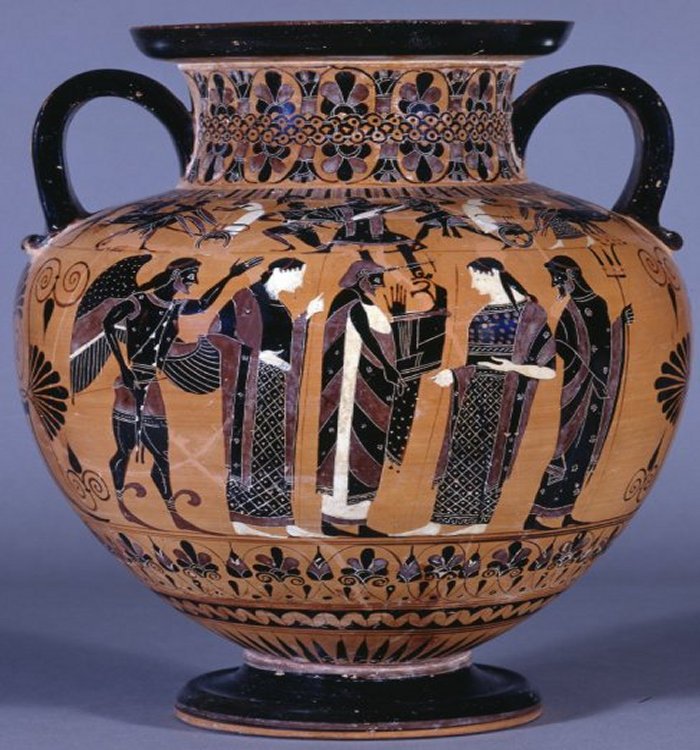 Apollo plays his Kithara between Artemis and Leto. Attic Black-Figure Amphora, ca. 550 BC. British Museum, London
Apollo plays his Kithara between Artemis and Leto. Attic Black-Figure Amphora, ca. 550 BC. British Museum, London
This popular goddess (also called Diana in Roman mythology) was worshiped in many places and was among the most respected Olympians. Many scholars believe that Artemis's name and the goddess herself are ancient, originally pre-Greek, from prehistoric ancient Greece before the first Proto-Greek settlers appeared in the area.
Mythological sources say that as a child, Artemis was thrown away by Hera. In grief, she asked her father Zeus for six wishes that Zeus agreed to. One of these wishes was that she always wanted to remain a virgin. She gathered her pack of virgin hunters.
Beautiful gold hairnet with a relief of Artemis, goddess of the hunt, dated as from 200 B.C. from the Karpenisi Treasure. Credit: National Archaeological Museum, Athens
Her favorite hunting partner was Orion, but one day, Orion was killed by Artemis or Gaia. Or did it, perhaps, her brother who sent the scorpion that killed Orion?
Like her brother, the island of Delos was also her birthplace. In this place, Leto had found refuge after being persistently chased by Hera, the wife and one of three sisters of Zeus in the Olympian pantheon of Greek mythology and religion.
There are many conflicting accounts regarding the birthplace of Artemis and Apollo.
According to Bibliotheca of Pseudo-Apollodorus, a compendium of Greek myths and heroic legends, 'Leto had relations with Zeus, for which she was harassed by Hera all over the earth. Leto finally reached Delos and gave birth to Artemis, who immediately helped her mother to deliver Apollo…'
Statue of Artemis, from Mytilene, Lesbos, Roman copy of a 4th century BC type, Istanbul Archaeology Museum. Uploader: Marcus Cyron - CC BY-SA 2.
"Artemis convinced her father to grant her six wishes: to remain eternally unmarried and chaste; to possess a bow and an arrow and a tunic for her hunting; to have various names that would distinguish her from her brother; to have sixty "daughters of Okeanos," all at the age of nine, to be her choir; to have twenty Amnisides Nymphs [of the river Amnisus, Crete] and handmaiden to look after her most prized possessions: her dogs and bow during her resting period; and to be the Light Bringer. She desired to assist women in pain during childbirth.
Artemis believed that the Fates had chosen her to be a midwife, but she carefully secured her chastity and remained a pure virgin. Those devoted to Artemis were bound to live pure and chaste. Any transgression of their vows of chastity didn't go unpunished..." 1
Written by – A. Sutherland AncientPages.com Staff Writer
Updated on December 6, 2023
Copyright © AncientPages.com All rights reserved. This material may not be published, broadcast, rewritten or redistributed in whole or part without the express written permission of AncientPages.com
Expand for referencesReferences:
1. Weaver, S. Greek Gods: The Olympians of Greek Mythology
Bremmer Jan N., Erskine A., (edition) - The Gods Of Ancient Greece: Identities and Transformations
More From Ancient Pages
-
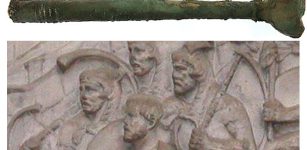 Vindolanda Treasures: Rare Roman Cornu Mouthpiece – Instrument of War – Uncovered
Archaeology | Sep 24, 2022
Vindolanda Treasures: Rare Roman Cornu Mouthpiece – Instrument of War – Uncovered
Archaeology | Sep 24, 2022 -
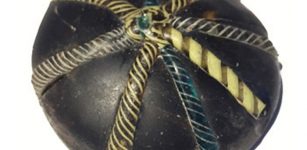 Anglo-Saxon Previously Unknown Monastic Or Trading Center – Discovered
Archaeology | Mar 7, 2016
Anglo-Saxon Previously Unknown Monastic Or Trading Center – Discovered
Archaeology | Mar 7, 2016 -
 Remarkable 2,000-Year-Old Smoke-Absorbing Lamps Reducing Pollution Discovered
Archaeology | Nov 12, 2015
Remarkable 2,000-Year-Old Smoke-Absorbing Lamps Reducing Pollution Discovered
Archaeology | Nov 12, 2015 -
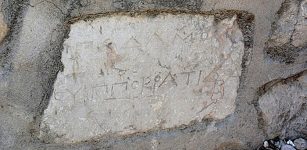 2,300-Year-Old Tablet Found In Mugla, Turkey – Region Of Great Historical Importance In Ancient Times
Archaeology | Jun 5, 2019
2,300-Year-Old Tablet Found In Mugla, Turkey – Region Of Great Historical Importance In Ancient Times
Archaeology | Jun 5, 2019 -
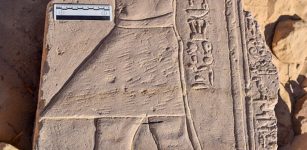 2nd Century Roman Temple Unearthed In Aswan, Egypt
Archaeology | Feb 23, 2018
2nd Century Roman Temple Unearthed In Aswan, Egypt
Archaeology | Feb 23, 2018 -
 Norse God Hermod’s Meeting With The Finnish Magician Rostioff Who Revealed The Prophecy Of Vali
Myths & Legends | Feb 13, 2023
Norse God Hermod’s Meeting With The Finnish Magician Rostioff Who Revealed The Prophecy Of Vali
Myths & Legends | Feb 13, 2023 -
 Mystery Of The Royal Tombs At Vergina Deepens – Has Alexander The Great’s Sacred Purple Tunic Been Found Inside?
Archaeology | Oct 28, 2024
Mystery Of The Royal Tombs At Vergina Deepens – Has Alexander The Great’s Sacred Purple Tunic Been Found Inside?
Archaeology | Oct 28, 2024 -
 Archaeologists Uncover More Hidden Ancient Secrets In Saqqara, Egypt
Archaeology | Jan 6, 2025
Archaeologists Uncover More Hidden Ancient Secrets In Saqqara, Egypt
Archaeology | Jan 6, 2025 -
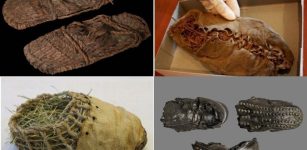 World’s Oldest Shoes: Some Look Surprisingly Modern
Artifacts | Jun 22, 2023
World’s Oldest Shoes: Some Look Surprisingly Modern
Artifacts | Jun 22, 2023 -
 LIDAR Advanced Technology Spotted Rare Pre-Columbian Florida Village – Highly-Prized Producer Of Beads
Archaeology | Nov 10, 2019
LIDAR Advanced Technology Spotted Rare Pre-Columbian Florida Village – Highly-Prized Producer Of Beads
Archaeology | Nov 10, 2019 -
 Naupa Huaca: The Enigmatic Stone Temple In A Cave In Peru
Featured Stories | Sep 10, 2020
Naupa Huaca: The Enigmatic Stone Temple In A Cave In Peru
Featured Stories | Sep 10, 2020 -
 Artifacts From King Henry VIII’s Warship The Mary Rose – Analyzed
Archaeology | Apr 28, 2020
Artifacts From King Henry VIII’s Warship The Mary Rose – Analyzed
Archaeology | Apr 28, 2020 -
 On This Day In History: Galilei Galileo Demonstrates His First Telescope – August 25, 1609
News | Aug 25, 2016
On This Day In History: Galilei Galileo Demonstrates His First Telescope – August 25, 1609
News | Aug 25, 2016 -
 Celtic Knot Decorated Bible, Gospels, Celtic Crosses And Symbolized Strength, Love And Continuity Of Life
Ancient Symbols | Nov 8, 2018
Celtic Knot Decorated Bible, Gospels, Celtic Crosses And Symbolized Strength, Love And Continuity Of Life
Ancient Symbols | Nov 8, 2018 -
 Huge 7,000-Year-Old Man-Made Structures Used For Religious Rituals Spotted In Poland
Archaeology | Nov 30, 2019
Huge 7,000-Year-Old Man-Made Structures Used For Religious Rituals Spotted In Poland
Archaeology | Nov 30, 2019 -
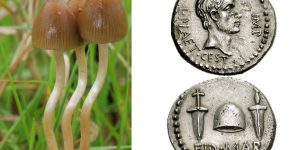 Strange Tale How The Liberty Cap Mushroom Got Its Name Starts In Ancient Rome
Featured Stories | Sep 3, 2023
Strange Tale How The Liberty Cap Mushroom Got Its Name Starts In Ancient Rome
Featured Stories | Sep 3, 2023 -
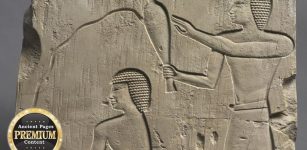 Daily Life Of Priests And Priestesses In Ancient Egypt
Ancient History Facts | Apr 5, 2018
Daily Life Of Priests And Priestesses In Ancient Egypt
Ancient History Facts | Apr 5, 2018 -
 Did The Unique Gjermundbu Viking Helmet Belong To A Warrior Who Served Rulers In The East?
Archaeology | Feb 8, 2022
Did The Unique Gjermundbu Viking Helmet Belong To A Warrior Who Served Rulers In The East?
Archaeology | Feb 8, 2022 -
 A 5,000-Year-Old Anatolian Sword Identified In Armenian Monastery In Venice
Artifacts | Feb 28, 2020
A 5,000-Year-Old Anatolian Sword Identified In Armenian Monastery In Venice
Artifacts | Feb 28, 2020 -
 Ancient Objects Used In Unknown Celtic Ritual Discovered In Polish Lake
Archaeology | Jul 22, 2024
Ancient Objects Used In Unknown Celtic Ritual Discovered In Polish Lake
Archaeology | Jul 22, 2024



